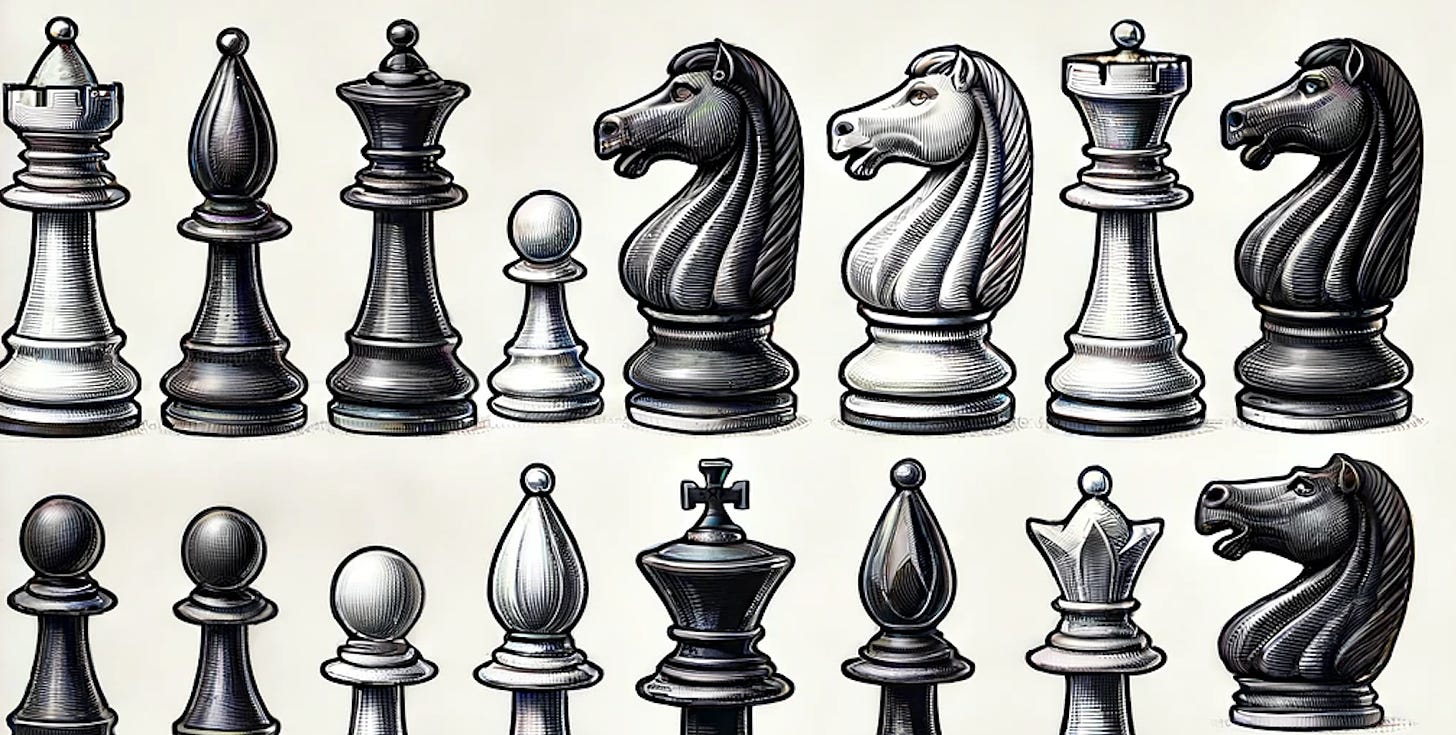As a myeloma specialist, typically, two kinds of patients come to me for a second opinions or consultations about their disease. Newly diagnosed patients want an opinion about having an autologous stem cell transplant. Patients who have relapsed after their initial therapy are looking for advice about what to do next.
The most common conversation I have often surrounds sequencing of treatments. Many patients have been told, or otherwise think that they should use a specific treatment later to reserve the best option for last – most often, it is the patient who tells me they don’t want to use up their best options early on. I hope to convince you all why this is a flawed strategy!
My typical recommendation to patients is to use the best available therapies early, and in combination, if possible.
Chess offers a fitting analogy for this point. The winning move is checkmate, where the opponent's king is under attack and unable to escape, capture one of your pieces, or block the threat. Just like with myeloma, there are countless chess strategies to achieve the objective. In chess, the aggressive or attacking style stands out as one used by many of the great masters of chess, including Gary Kasparov and Mikhail Tal. In this style, early and aggressive use of the best pieces is used to force checkmate early on. In multiple myeloma, based on my experience and some data, this appears to be the approach most likely to give the best long-term outcomes. Why?
“Attrition rates” tell us the percentage of patients who do not receive a next line of therapy due to death or loss of follow-up. Anyone who treats myeloma knows this is a real issue. Scrambling to get a new treatment started and working while the disease is progressing quickly is a challenge, even with all the therapies we have available.
In a publication of ours (1), attrition over lines of therapy was analyzed in a cohort of patients with MM in real world databases. We found high attrition rates for both newly diagnosed patients receiving frontline therapy, but also for subsequent lines of therapy, and more pronounced in patients not going to stem cell transplant. Taken together with known decreases in survival with subsequent therapies, we concluded that the most effective treatments should be given early to maximize long term success.
In the 2023 study from Austria Dr Benda and colleagues analyzed attrition rates from the Austrian Myeloma Registry (2). In contrast to the US study, data from the Austrian registry showed lower attrition rates for patients receiving frontline induction and autologous stem cell transplant, but attrition was higher in elderly patients, and there was a notably lower numbers of patients with poorer performance status, burden of comorbidities, and high-risk features in second line and beyond, in line with our data.
Finally, in an analysis from the Canadian health care system by McCurdy et al (3), attrition rates in multiple myeloma were determined – attrition was specifically defined as failure to receive another line of therapy despite progression or due to death. Attrition rates were higher amongst patients who did not undergo autologous HCT; in a multivariate analysis, older age, suboptimal response, and time to progression emerged as predictors of attrition – perhaps unsurprisingly.
In addition to these data, there are other compelling consideration for why using our best treatments early is beneficial. Most myeloma patients are over 60, and some percentage of those patients are likely to have comorbidities or organ damage from myeloma that may progress and preclude subsequent lines of therapy.
In the hands of a master chess player, deploying highest-scored pieces like queens (9 points) and rooks (5 points) early can control key areas of the board, pressure the opponent, and create early threats. In myeloma treatment, it is critical to use the highest-scored pieces—Daratumumab or Isatuximab with RVD, autologous stem cell transplant, and possibly early use of bispecific antibodies or CAR T cell therapy, especially in the patients with the most aggressive disease types.
Don’t save your best pieces for last!
References:
1.Fonseca R, Usmani SZ, Mehra M, Slavcev M, He J, Cote S, Lam A, Ukropec J, Maiese EM, Nair S, Potluri R, Voorhees PM. Frontline treatment patterns and attrition rates by subsequent lines of therapy in patients with newly diagnosed multiple myeloma. BMC Cancer. 2020 Nov 10;20(1):1087. doi: 10.1186/s12885-020-07503-y. PMID: 33172403; PMCID: PMC7656738.
2.Benda MA, Ulmer H, Weger R, Reimann P, Lang T, Pichler P, Winder T, Hartmann B, Strassl I, Krauth MT, Agis H, Sormann S, Podar K, Willenbacher W, Willenbacher E. Attrition Rates in Multiple Myeloma Treatment under Real World Conditions-An Analysis from the Austrian Myeloma Registry (AMR). Cancers (Basel). 2023 Feb 2;15(3):962. doi: 10.3390/cancers15030962. PMID: 36765918; PMCID: PMC9913775.
3. McCurdy A, Mian H, LeBlanc R, Jimenez-Zepeda VH, Su J, Masih-Khan E, Visram A, Louzada M, Song K, White D, Sebag M, Stakiw J, Reiman A, Aslam M, Bergstrom D, Kotb R, Kaedbey R, Gul E, Reece D, Venner CP. Redefining attrition in multiple myeloma (MM): a Canadian Myeloma Research Group (CMRG) analysis. Blood Cancer J. 2023 Jul 20;13(1):111. doi: 10.1038/s41408-023-00883-x. Erratum in: Blood Cancer J. 2023 Aug 28;13(1):129. doi: 10.1038/s41408-023-00888-6. PMID: 37474492; PMCID: PMC10359388.








Thank you for sharing this very valuable information. This was so appreciated.
Excellent advice. Another example of Bart Barlogie's impact on today.